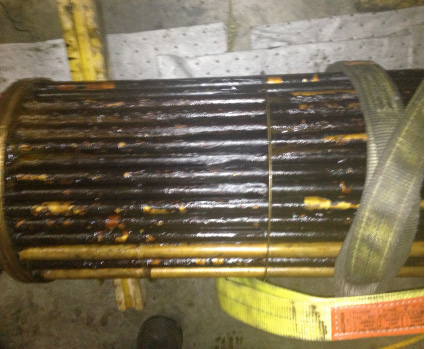Inadequate Oil Supply: Don’t Kill Your Turbine on Startup
This is Part Two of a three part series on steam turbine tips, discussing the challenge of inadequate oil supply.
Your lube oil temperature needs to be lower at startup and shutdown than at full speed to reduce potential issues.
Your turbine’s rotor does not actually ride on the surfaces of its bearings. It rides on a thin film of oil between the rotor and the bearing. At high turbine speeds the rotor hydroplanes across the oil, eliminating contact with the Babbit of the bearing. The heat generated by the turbine decreases the viscosity of the oil and increases its “slipperiness”, which is important at high speeds.
 As the rotor slows down, the oil needs to be more viscous to repel the force towards the bearing.
As the rotor slows down, the oil needs to be more viscous to repel the force towards the bearing.
Failure to lower the lube oil temperature (and therefore increase viscosity) can result in light bearing wipes or smearing. These conditions would occur during turning gear operation, unit startup and unit coast down during shutdown.
The ideal lube oil temperature at these lower speeds is 90 degrees Farenheit. Of course, oil temperature can also be too cold on startup—similar to trying to start your car on a cold winter day. Operational personnel are ultimately responsible for maintaining this lower lube oil temperature by regulating water through the lube oil coolers.
Maintaining lube oil cooler cleanliness is also very important for turbine startups. The tubes must be clean to allow the efficient transfer of heat. Also, as a best practice the bundles should be cleaned every two (2) years. Lube oil coolers are the single most common area for contaminants to hide.
By following these tips, you can ensure the efficient startup of your turbine, as well as greatly reduce any potential operational issues or challenges.
Do you have questions about your steam turbine backup system? Contact PSG today to explore how we can provide support and maintenance options to help you avoid backup system problems.
